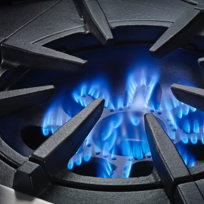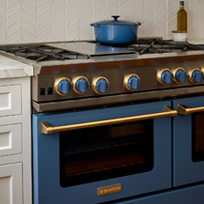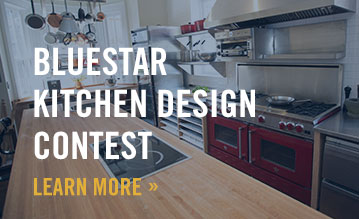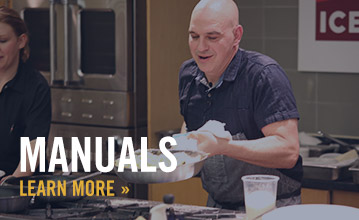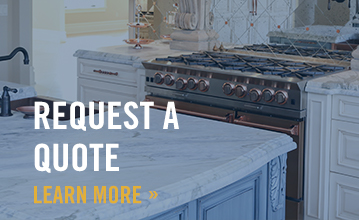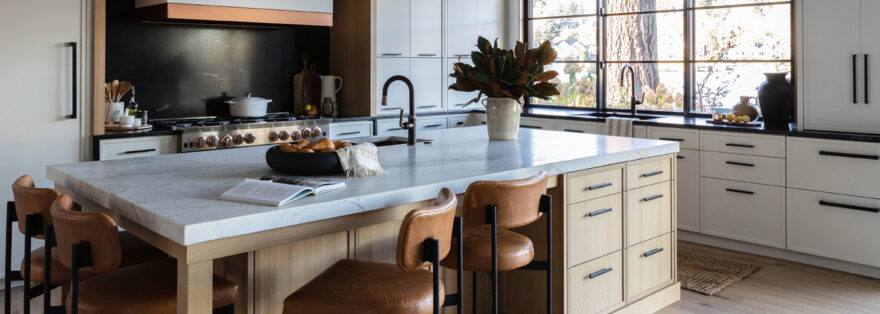Avid home cooks often want to outfit their kitchens with the kind of high-end appliances and gear used by professional chefs. There’s that aspirational notion that somehow having the right equipment will lead to better food.
So what’s in a pro kitchen that works well in a home kitchen?
Chicago-based kitchen designer Mick De Giulio is a firm believer in buying high-quality gear.
“Appliances sustain a lot of hard use,” he says. “They’re expensive at any level and people expect them to last.”
From an aesthetic standpoint, De Giulio says, commercial-looking models impart a sense of strength to the kitchen design. And their ramped-up features can also be attractive.
“Pro ranges have higher BTUs on burners, but also finely tuned settings to maintain lower temperatures for simmering,” he says.
Big Chill has a 48-inch range equipped with eight powerful burners and a large-capacity oven with a rapid preheat feature. It’s available in tasty hues like green, orange, red and yellow.
Keeping food warm before serving it is a prime concern in restaurant kitchens. At home, we’re inclined to just put a microwave lid on a latecomer’s plate. But to retain just-prepared flavor and moistness, consider a warming drawer like the pros use.
Wolf has one with several stainless-steel compartments, and the drawer can be set for various temperatures. Use it to warm plates and bowls, too, or to proof bread.
While pro kitchens tend to be gas-powered, not all homes are equipped for that. BlueStar has introduced a suite of electric appliances with professional features: heavy-duty steel construction and fast, powerful heating controls, for example. The oven is roomy, and the fridge and freezer can hold extra-large sheet pans, perfect for hosting large parties.
Celebrity chef and James Beard Award winner Wylie Dufresne, who last year opened Du’s Donuts in Brooklyn, just re-did his New York City home kitchen.
“So much about functionality of a kitchen is tied to movement within it,” he says, noting that in a home setting, there may be multiple cooks, kids or guests in the space. Isolating task zones is a good idea.
He installed a True Refrigeration ice-making appliance, since those in conventional freezers can contribute unwanted moisture to frozen foods. His fridge is equipped with noise-dampening insulation and a hygienic, odor-resistant stainless interior.
Michelin-starred chef and restaurateur Thomas Keller recently partnered with global design firm Snohetta to renovate his Yountville, California, restaurant, The French Laundry, incorporating elements that he says are just as important in residential kitchens.
Think smarter, not bigger, when doing a renovation, he advises.
“Size doesn’t always yield improved functionality. Our new kitchen is designed around intimacy and proximity — to one another and the tools we need,” he says. “Additional steps slow you down. The same lesson rings true for a kitchen layout at home.”
Durable surfacing is worth every penny, Keller says: “Zero maintenance can be a benefit to both professional and residential kitchens.”




